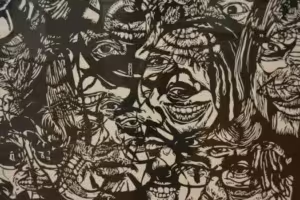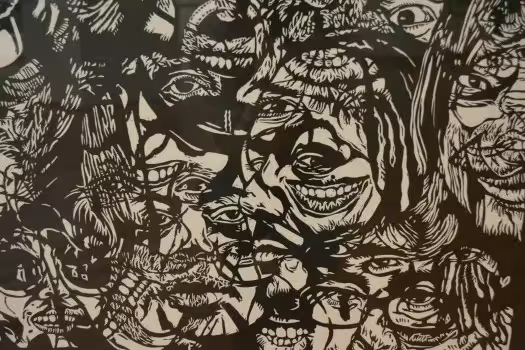Horror Vacui
Horror Vacui: The Fear of Empty Space in Art and Culture
Introduction

**Horror vacui**, literally “fear of empty space” in Latin, is a concept that has traversed the history of art and culture, manifesting in various forms and contexts. This term describes the fear or aversion to empty space, often leading to the filling of every possible surface with details and decorations. However, this tendency is not limited to art alone; **horror vacui** can also be observed in architecture, literature, design, and even human behavior.
Origins and Definitions
The concept of **horror vacui** has deep roots, going back to Greek philosophy. Aristotle, for example, believed that nature abhors a vacuum and that empty spaces cannot exist in nature, an idea that influenced scientific and philosophical thought for centuries. In the artistic and cultural realm, however, **horror vacui** specifically refers to the tendency to avoid empty spaces in artworks.
Horror Vacui in Ancient Art
Throughout history, many cultures have shown a marked aversion to empty space. For example, in Islamic art, characterized by intricate geometric and calligraphic decorations, the complete filling of surfaces reflects not only an aesthetic but also a spiritual concept: the idea that only God can create emptiness. Similarly, in medieval European art, illuminated manuscripts and Gothic cathedrals display a density of detail that seems to aim to fill every available space.
 Horror Vacui in the Renaissance and Baroque
Horror Vacui in the Renaissance and Baroque
With the Renaissance, European art saw a return to classical ideals of proportion and harmony, but **horror vacui** did not disappear entirely. In fact, in the following centuries, during the Baroque period, decorative exuberance reached new heights. Baroque churches and palaces are known for their elaborate decorations, which seem to eliminate any trace of emptiness.
Horror Vacui in Eastern Art
Eastern art, particularly Japanese and Chinese, also presents examples of **horror vacui**. Japanese Zen gardens, despite their apparent simplicity, are carefully designed to avoid empty spaces and convey a sense of fullness and harmony. Similarly, traditional Chinese art, with its intricate landscapes and calligraphy, seeks to fill every space with meaning and beauty.
Horror Vacui in Modern Design
In the 20th century, the concept of **horror vacui** found new applications in design and advertising. Modern and contemporary art often challenges **horror vacui**, embracing minimalism and the use of negative space. However, in contrast, pop culture and digital media show a tendency towards information and image overload, reflecting a new kind of **horror vacui** where emptiness is seen as a loss of communicative opportunity.
 Horror Vacui in Contemporary Culture
Horror Vacui in Contemporary Culture
In contemporary times, **horror vacui** can be observed in various aspects of daily life. Urban environments, with their densely populated buildings and omnipresent advertisements, seem to embody this fear of emptiness. Even in the digital sphere, the endless stream of content and notifications on social media reflects a constant attempt to fill the “void” of time and attention.
Psychological Interpretations
From a psychological perspective, **horror vacui** can be interpreted as an expression of anxiety and insecurity. The need to fill every space might stem from a fear of nothingness or a fear of the absence of meaning. This phenomenon can also reflect a search for control and order in a world perceived as chaotic and unpredictable.
Conclusions
**Horror vacui** is a fascinating concept that spans the history of humanity, manifesting in multiple artistic and cultural forms. From past to present, this tendency to avoid emptiness tells us much about our deepest fears and desires. In an era dominated by information and imagery, understanding **horror vacui** can offer valuable insights into our relationship with space, meaning, and artistic expression.


 Horror Vacui in the Renaissance and Baroque
Horror Vacui in the Renaissance and Baroque




